An innocent casualty, the 405 Mi16 was Peugeot’s last shout in America
It was inevitable that stepping into Colin Pan’s 1991 Peugeot 405 Mi16 and hearing its sweet, high-revving engine would trigger lots of memories. After all, I owned one 20 years ago.
These front-wheel-drive family sedans were uncommon in the Y2K era, the orphaned last vestige of Peugeot’s 30+ years of selling cars in America. Probably more so now. While the 405 was a world-beater everywhere else, it was a swing and a miss on our shores. The project’s failure had very little to do with the car itself, which was loads of fun, and cheap—if you could find one.
When my first Peugeot 405 (a 110-horsepower, eight-valve S I bought for $1200) was written off in an accident in 2001, I returned to the former dealership from which I’d bought it. Frank Furci, the aging Italian immigrant proprietor of Overseas Motors in Hastings-on-Hudson, New York led me up to the second level of his tiny 19th-century building. A bright red 1991 Mi16 was waiting there.

By then, just a couple years into the new millennium, the fruits of Peugeot’s Sochaux plant in eastern France had been absent from U.S. showrooms for a decade. Peugeot Motors of America (PMA) still technically existed at that time, with an office and a fleet of shiny new manufacturer-plated 406s in New Jersey. Overseas, by contrast, was filled with dusty remnants of the past. A dozen rusty 504s, crash-damaged 505 taxicabs, a couple of 604s, two pristine 505 wagons. and ceiling-high piles of parts surrounded the 120,000-mile, $2700 Mi16.
The 405’s sleek, Pininfarina-penned shape hides a chassis every bit as capable and communicative as the famous 205 hatchback. If the 8-valve S was lots of fun, surely the twin-cam, 16-valve version (thus the Mi16 name) with almost 40 percent more power would be even better? I bought it on the spot. While it suffered a variety of electrical headaches, the car manifested an unmistakable joie de vivre throughout my ownership.

The sonorous, rev-forever engine (with 150 horses at 6400 rpm and 128 pound-feet at 5000 rpm), supple suspension, and slick-shifting five-speed seemed much more than the sum of their parts. The Mi16 encouraged the driver to hoon it no matter how pedestrian the journey, a feeling rekindled in Mr. Pan’s lovingly-maintained example.
Sadly, I never saw the upstairs treasure trove again. Overseas serviced Peugeots for 15 years after the company’s 1991 U.S. withdrawal, sometimes with just Frank and his right-hand man “Bob the mechanic” working alone. Eventually, they took on other cars for lack of Peugeot work. In time, the old showroom became a video store, then the shop was sold and became a collision facility.
It shouldn’t have played out that way, but then again there was no true justice for the 405 in America. The car was a world-beater, just not here. So what happened? First and foremost, the 405 was smaller and quite different from previous U.S.-market Peugeots, which made it a hard sell even with some brand loyalists. But more important was that it was caught in a perfect storm of increased competition in a contracting car market capped by a global recession.
To find out more about the 405’s U.S. flameout, I caught up with Daniel Petit, PMA’s National Marketing Manager in the time leading up to the car’s launch, and later a communications officer at the company’s Paris office.
European All-Star, American also-ran
For Europeans, the 405 was the right car at the right time. Peugeot had been gradually shifting to smaller front-drive designs since the 1960s, but 1983’s 205 supermini catapulted the brand from flagging, conservative outfit to best-selling market leader. Its success influenced and informed every Peugeot introduced for the next two decades, including the 405 for 1988, which replaced the older (and far more conservative) 305.
The 405’s design was based on the platform architecture of the Citroën BX but incorporated lessons learned from the 205 and parent company PSA’s new 1980s engine families, the TU and XU.
It was also created by a team of all-stars. The styling was handled at Pininfarina under Enrico Fumia, somewhat to the chagrin of Peugeot’s own chief designer and 205 creator Gérard Welter, who felt his teams’ in-house designs were better. The user-friendly interior was envisioned by a group led by famous ex-BMW and Mercedes designer Paul Bracq.
Welter could not argue with the results, however. Sales totaled 500,000 in the first year and a half. It won the 1988 European Car of The Year (ECOTY) trophy by the widest-ever margin.

Most Americans had no idea about any of this. Peugeot’s image in the U.S. was that of “The French Mercedes,” and the company even used that tagline at times. Only the brand’s big rear-drive cars were sold here after 1972, but they were nothing like the more modern front-drivers and even in Europe, sales of cars like the big 505 were falling. The 505’s potential successor, the front-drive 605, would not be ready for America until 1992.
“Just before the launch of the 405, PMA went a little upscale with new variations of the 505 like the STX and Turbo S,” Petit tells Hagerty, “But the portfolio of products we could choose from to replace that car was very limited and we knew the 405 wasn’t quite it. It had lots of good qualities, but it was smaller, front-drive, and not as upscale. So it was a challenge.”
Indeed, French management often struggled to understand the U.S. market, at one point fighting Peugeot Motors America on the need to have four power windows in the 405, rather than Euro-style power fronts and simple crank rears. The rear window switches ended up on the aft part of the center console rather than the doors. “I was in some of those factory meetings and there were just some things they wouldn’t do. We weren’t a priority,” remembers Petit.
Hero to zero
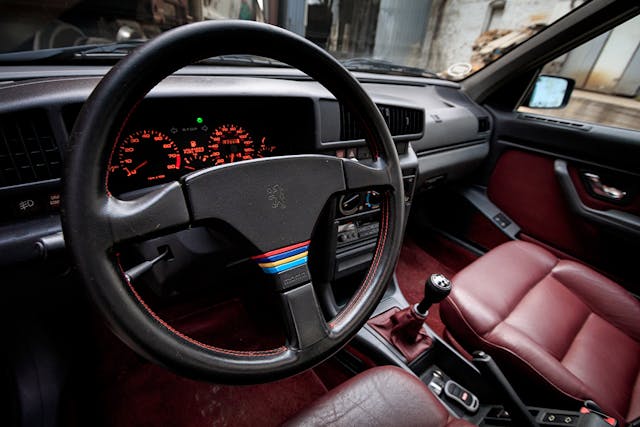
Still, the 405’s success in Europe seemed to bode well for capturing new customers. “Since we’d just won the ECOTY award, that was the hook we used for the initial marketing campaign.”
“To many customers, that award meant ‘this car is the best car’,” says Petit. Indeed, Car & Driver labeled the Mi16 “The best Peugeot ever” on a 1988 cover. “In hindsight, maybe we overplayed that win. Lots of people came to the dealership only to find that while the car was pretty good, it wasn’t a BMW or a Mercedes,” Petit says.
While the 405 cost less than a 3 Series, it was still several thousand dollars more than an Acura Integra or Volkswagen Jetta. Meanwhile, it didn’t help Peugeot that the car market was generally contracting (by 23 percent from 1986 to 1991) and PMA’s dealer network (just 151 stores by 1991) was so small.
Sales were disappointing from the start, and the hot Mi16 and lovely station wagon (added in 1990) didn’t seem to make much of a difference. Nor did the Peugeot’s two consecutive Pikes Peak hill climb wins in 1988 and 1989. The 1991 recession rendered the economic climate even more inhospitable.

The final blow came, however, in the form of the larger 605 executive sedan, first built in 1989. “The 405 wasn’t selling, but we had high hopes for the 605. [However, the 605] had all kinds of quality problems at launch and didn’t do well at all in demanding markets like Germany.” Knowing that Americans were even harsher judges of French cars, Petit says, “A decision was made in Paris not to sell it [in America], and to pause sales as a whole.”
In accordance with the 605’s stumbles, Peugeot also nixed the launch of the all-wheel-drive 405 Mi16X4, slated for 1992. “They thought only 20 percent of the cars would be all-wheel-drive, and since sales were already so low, it just wasn’t worth bothering.”
Taxi!

Largely unwanted, the orphaned 405 was going for beer money when I bought mine in 2001. Peugeot’s disappearing act, as with Fiat and Renault in earlier years, sent resale values tumbling and non-enthusiast owners careening toward the nearest Volvo dealer. 405s were generally well-made, but were reasonably prone to quality gremlins—a situation made all the worse by a lack of support. All but the most hard-core Peugeot shops had closed by 2001 (a handful remain, mostly in New York and California) or moved on to other makes.
In the years since, the Internet and video games like Gran Turismo have made American enthusiasts (young ones, in particular) more aware of Peugeots. The 1998 Luc Besson film Taxi and its sequels helped, too.
“As a young kid, I watched those first two Taxi movies over and over, and that’s what led to my fascination with Peugeots, and specifically the 406,” says Pan. “When I learned that they actually made a U.S.-model four-door sports sedan before the 406, I immediately wanted one.”
Pan’s Peugeot
Pan finally found one in mid-2021, in good condition but needing some attention, including a cylinder head rebuild. “Most of my problems came early on, due to age or neglect. Aside from engine work the shifter linkage and clutch cable gave me issues, but after that it’s been trouble-free,” Pan says.
To wit, I had the same shifter issue 20 years ago.

Another boon is the large and international online community of Peugeot fans. “The owner base is small, but enthusiastic, and I’ve come to know many other Mi16 owners to share knowledge with.”
The Mi16 is Pan’s first non-Japanese car; his garage has historically home to vehicles like his Toyota Corolla FX16. How does it compare?
“Its definitely quite different from Japanese cars, the French engineering of fasteners, wiring code is definitely an eye-opener, but the whole experience of driving it is refreshing and fun. It really is a vehicle you need to feel and work with to get the most out of compared to its more forgiving Japanese counterparts.”
The 406 Mi16 always brings questions from other enthusiasts. “In person, most people don’t recognize what it is, and those who do know are usually people who actually owned one of these before.”
Stepping inside, the car feels smaller than it did in 2001, but every bit as joyful.
“My favorite thing about the car would definitely be the XU9J4 engine,” Pan says. “I’ve driven a lot of four-cylinder cars but this has to be the most vocal one, I can actually hear its intake sound reverbing at certain RPM range. The power delivery is very linear across the whole range, with very good midrange pick up.” Joie de vivre indeed.
Check out the Hagerty Media homepage so you don’t miss a single story, or better yet, bookmark it.


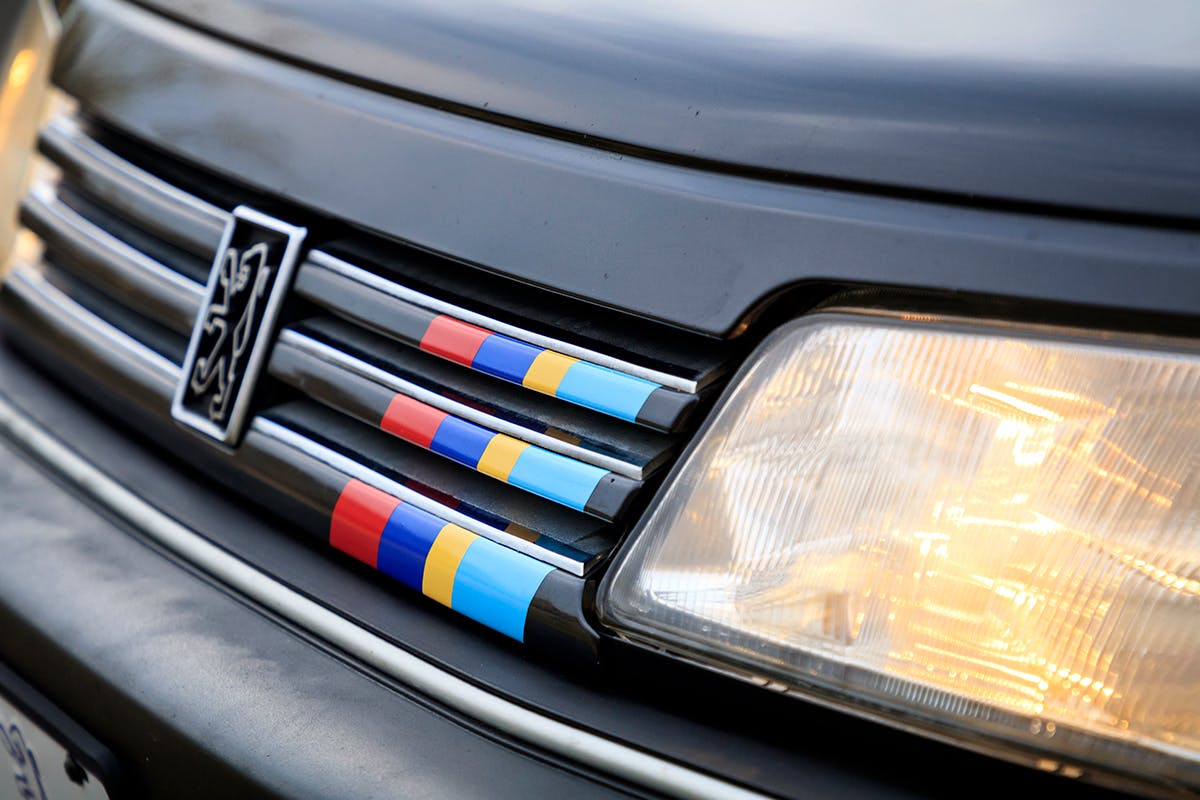
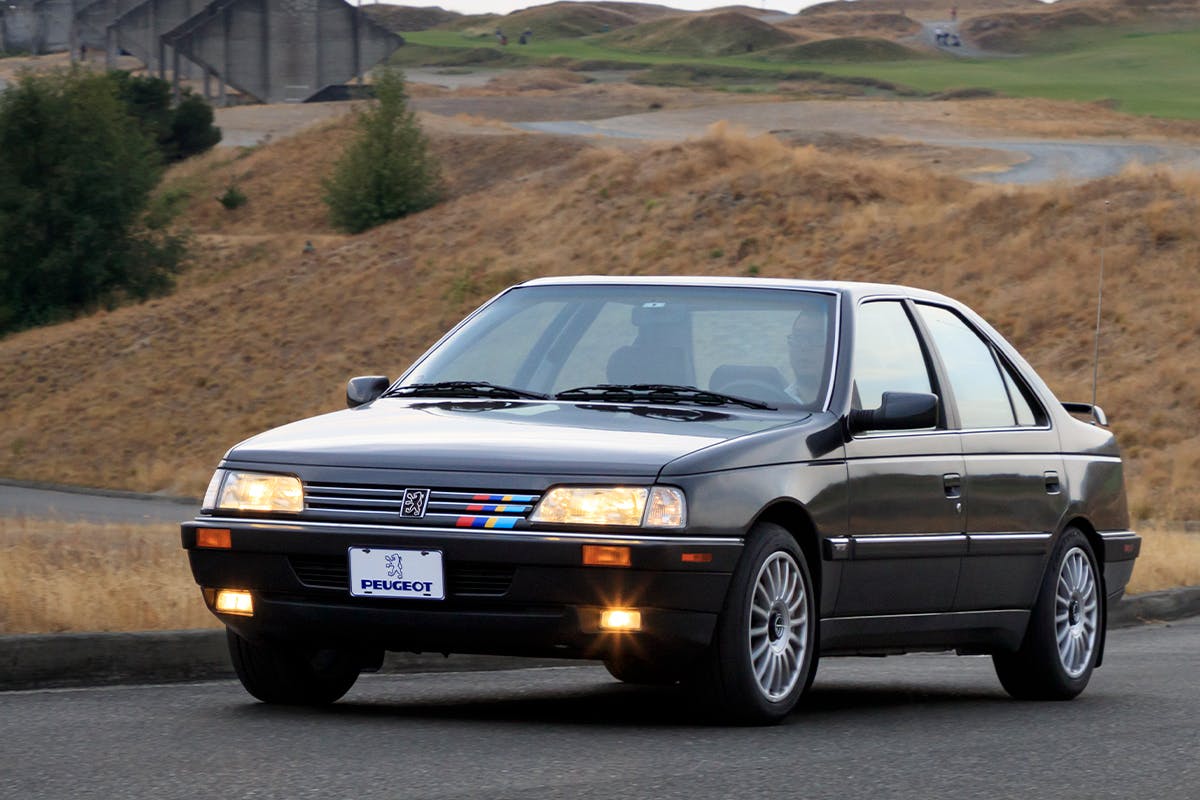

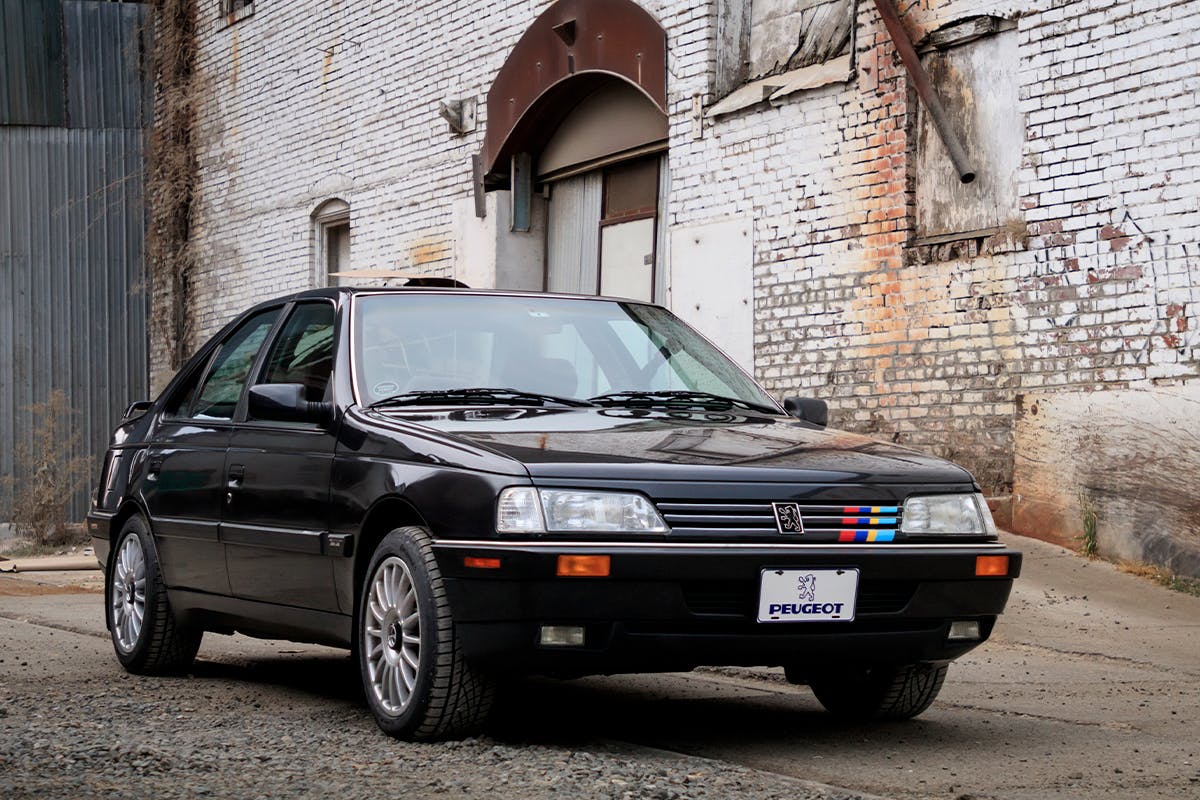
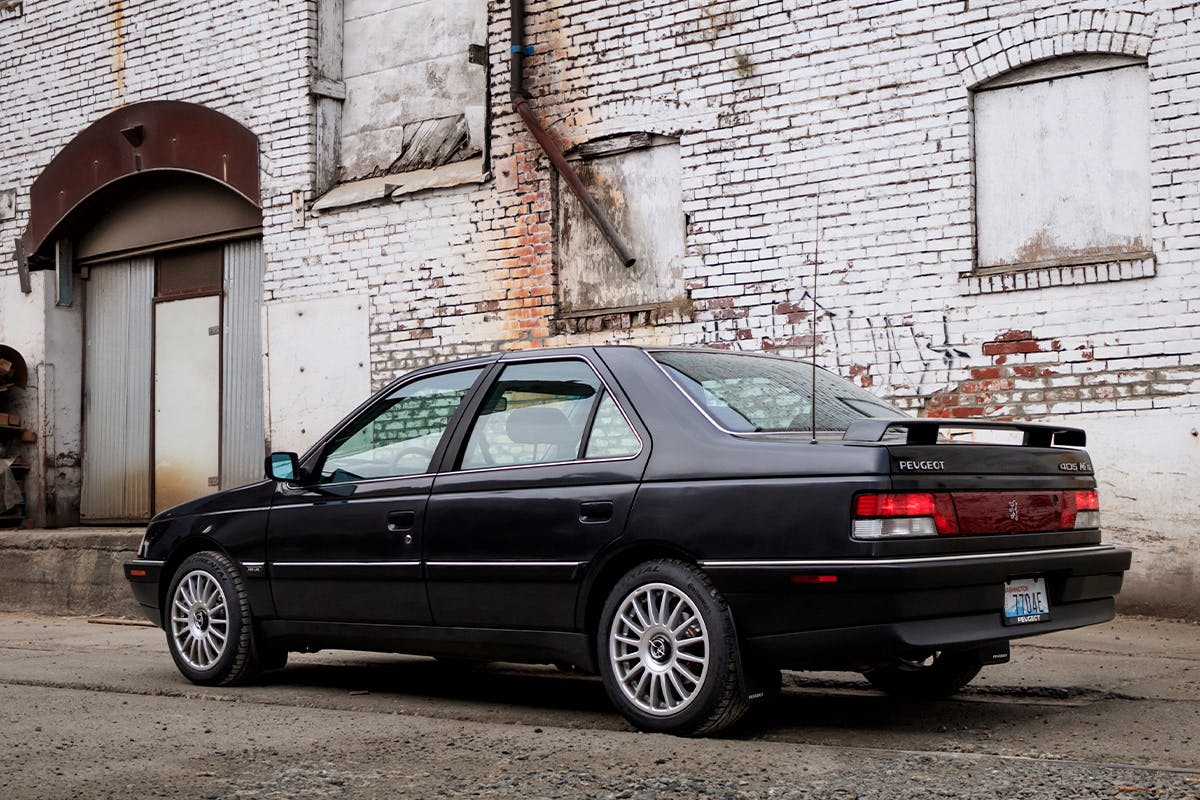
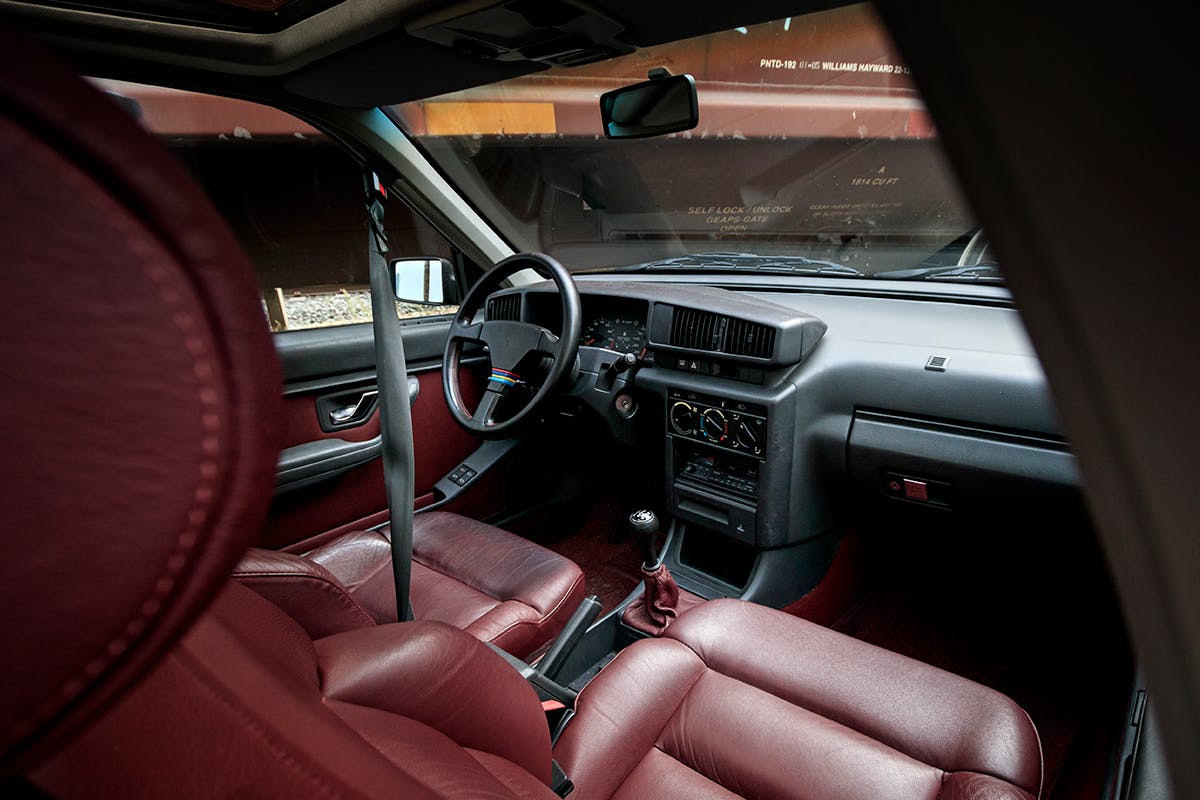
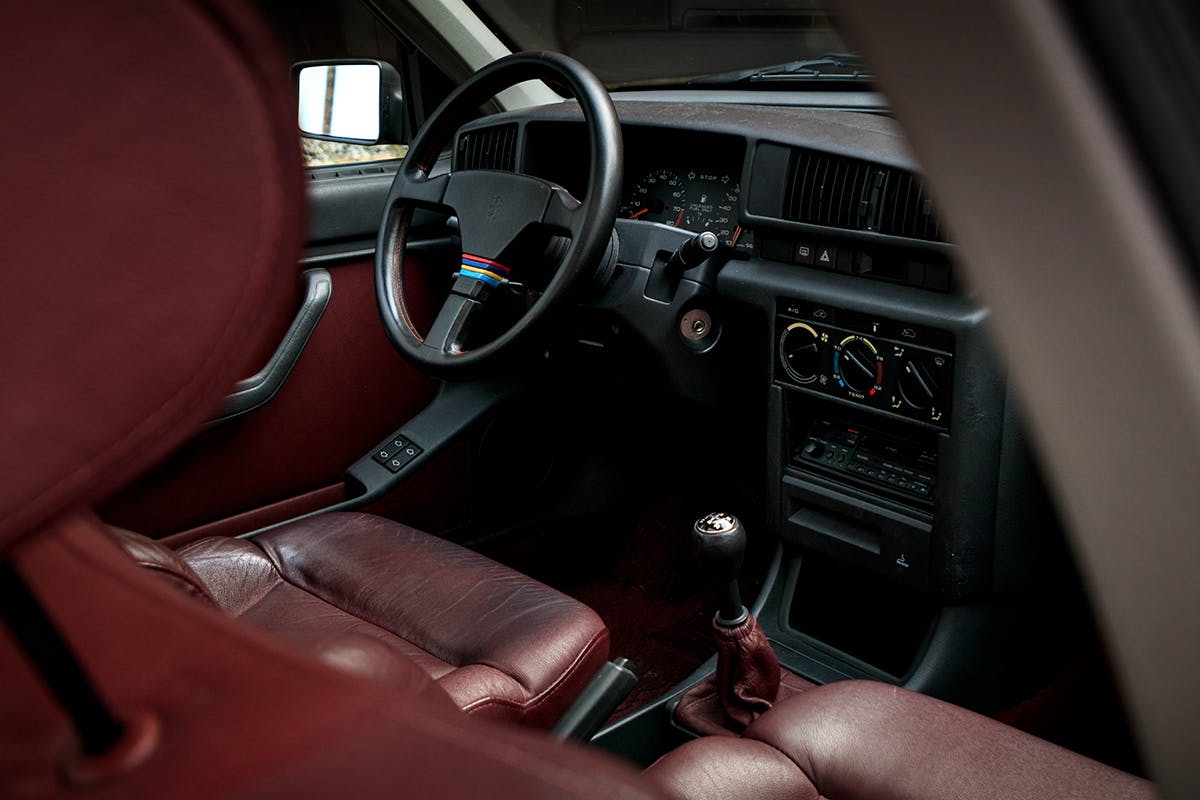



I remember Peugeot as a kid in the 80’s in Chicago. I didn’t see many but they did exist. Pretty sure they almost all disappeared near my by the time the 90’s rolled around. They looked nice but they died quickly in the salty Chicago winters.
My neighbors grandfather was a Peugeot Diesel fan.
To be honest the French really never had much of a following in the states as they had cars that never really stood out in the right way with iffy quality. Most rusted out as bad or worse than a Fiat in a salt bath.
But the Peugeot engines did keep on running till the body just could not carry it anymore.
The Lecar did more damage to the French rep than any. Boy did they rust and boy they were basic.
I bought a 1991 Mi16 in 1993. I loved it. I had before it, a 1989 205 GTi 1.9 in the UK in 1990 and wanted to bring it home I liked it so much, but it was RHD and didn’t have the money to ‘get it in’. I had a french mechanic in Atlanta that worked on the Mi16 and it needed help at times, he retired so I sold it. Fast forward to 2021 and I bought a 89 205 GTi 1.9 from Marseille. These cars do add joie to your vivre.
What killed Peugeot in America more than anything else was its corporate structure. Peugeot USA was set up with its own P&L and requirements to generate the same profits as the overall corporation in France. In practice this meant a muffler for my 604 that was $150 there was $600 in the US when purchased through Peugeot America. For comparison, my new, top of the line 604 had a purchase price of $12K. It needed 2 new mufflers every 3 years or so, 10% of the price of the car. It was like this for all parts. Simply an unrealistic business model.
I drove one of these back around 1990 as a press car. I remember it was a lovely drive. Unfortunately, we got a flat tire and when we went to use the factory tools to swap it for a spare, the lug wrench snapped in half… let’s just say quality control may have another of the company’s issues back then.
I bought a new dark Sorrento green metallic Mi16 in late summer 1991, after the pullout was announced, for $15,500 including a beautiful OEM wood trim kit. With fat 195/55/15 tires and classic comfortable French ride, it was truly like riding on rails. The drive train and body never had any material issues, but like the writer, the $5.00 plastic clip holding the shifter linkage to the transmission did fail at some point. There were small annoyances, like the pre-airbag mouse-track automatic seatbelts, but for the most part it was quite reliable. I was holding on to my current vehicle in anticipation of 2023 Peugeots hitting our shores, but in early 2021 Stellantis took care of that. Larry Dominique will be pleased to know that I instead bought an Alfa Romeo Stelvio Ti Sport, which has similar great handling qualities. My Mi16 was until that point the best handling car I ever owned. I miss it terribly to this day.
This car defined my youth. From my very first car ever after getting my license, a 1989 S purchased in 1993 to a very last one sold, a 1991 Mi16, around 2010, I’ve probably bought, dismentled, sold more than a dozen of them. I’ve learned to do everything on these cars… from engine overhals to auto tranny overhalls… memorized several part numbers… and codes like XU9J4 and ZF4HP14 are etched in my brain and can remove dashboard with my eyes closed (heater stepper motor and heater core leak). I even imported euro Mi16 bumpers and moldings to convert one to euro Mi16.
Some day I am going to import a rare T16 model into US.
I bought one right out of college. What a mistake. Car was at the dealer more than my house. Never stranded me but constant small stuff. My sunroof even got stuck open… ugh